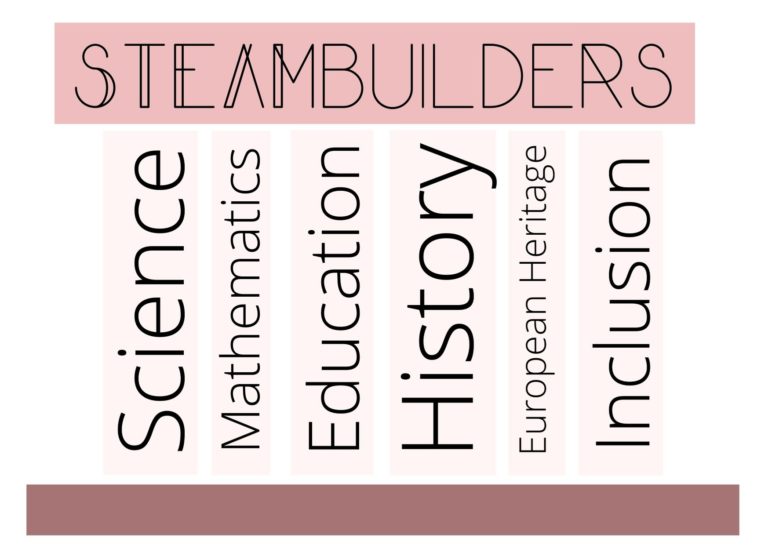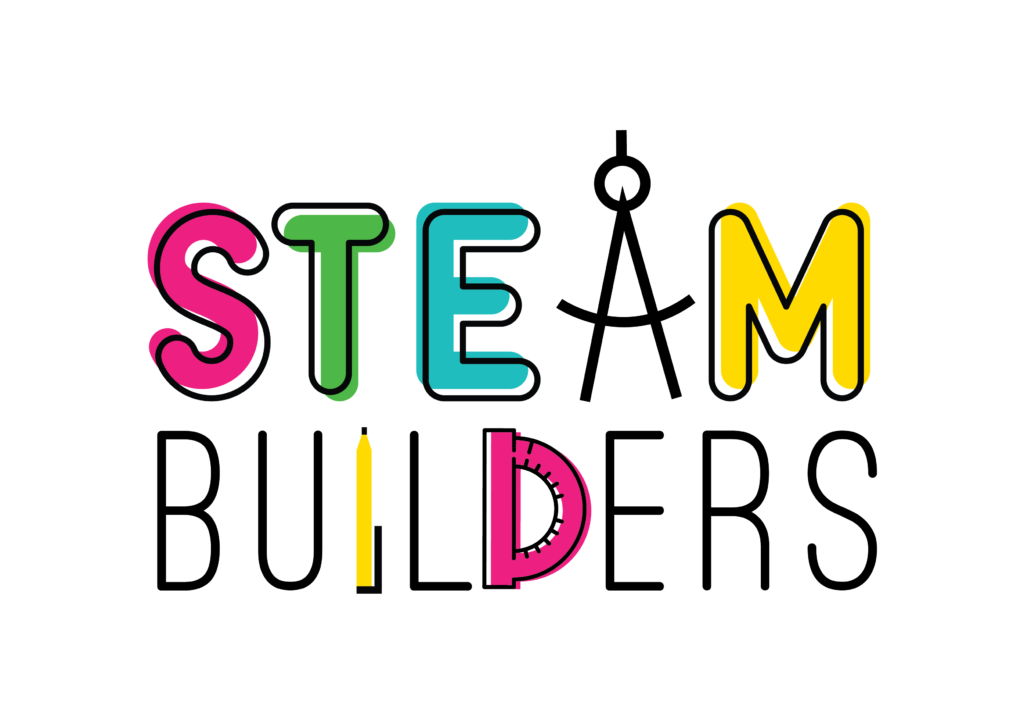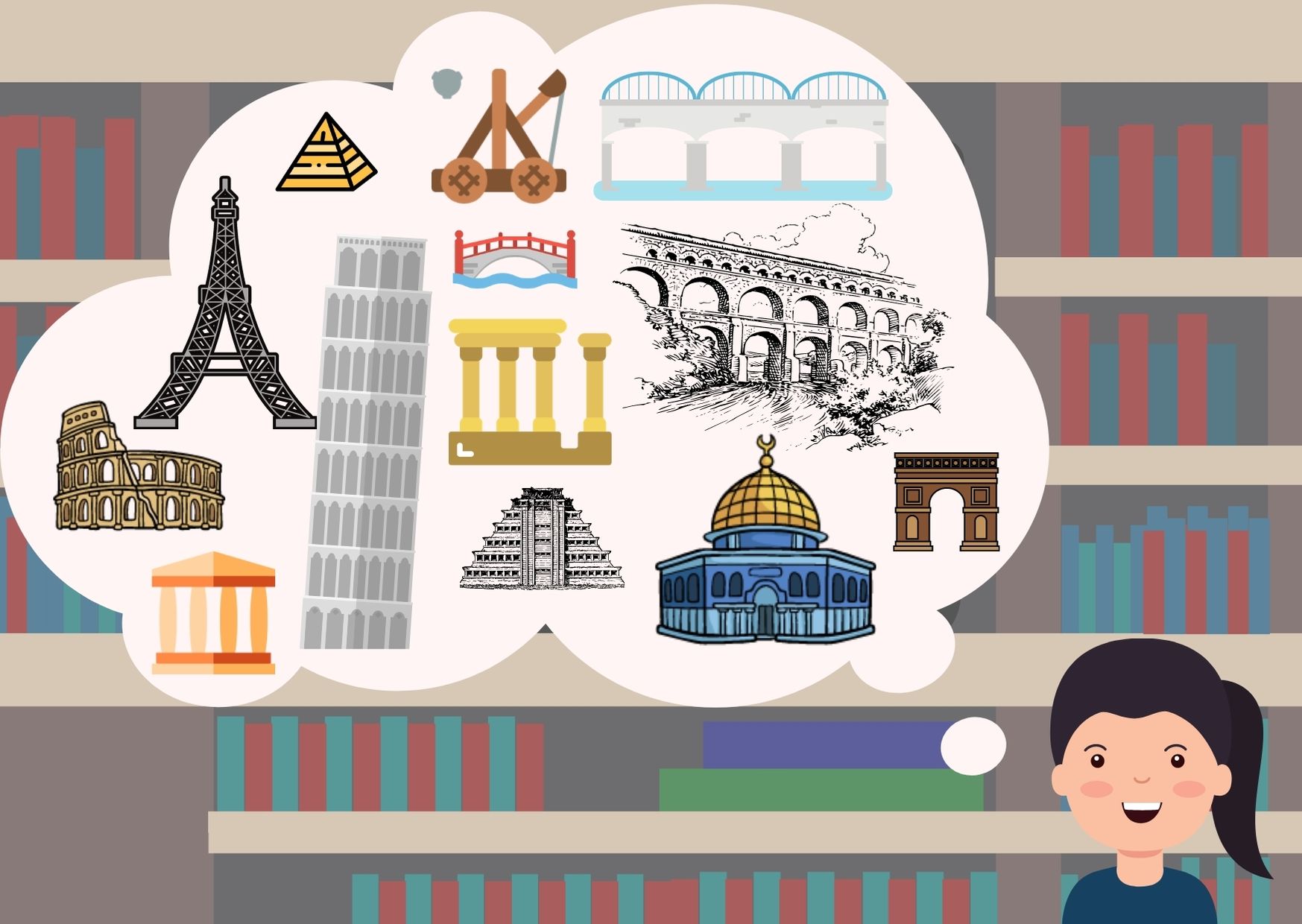From our new 2020 projects, you have already had a chance to read about TutoDYS, RecreatMATHS, TEAM of ART or Cued Speech Europa. All of these projects are designed to be inclusive for learners with Specific Learning Disorders while tackling challenges of education in the 21st century through “game-based pedagogies” and other innovative approaches. The project STEAMbuilders brings another perspective. In this article, we will explore what topics the STEAMbuilders project connects!
Have you ever wondered how a bridge that was built 100 years ago still holds up with modern cars and heavy trucks going over it? How did they make it so resilient? How aqueducts for water supply were built? And did you know that the Pantheon in Rome, with one of the largest reinforced concrete domes until today, was built more than 2000 years ago? Were you ever introduced to the origins of the Math and Science theories thanks to which these monuments are still preserved today? And were your History and Science lessons entirely separated with their own theories?
Pupils often see History as a series of old dates and dusty past events that have no links to today while Science can be seen as something modern and recent. We tend to forget that a lot of today’s scientific and mathematical theories were actually discovered and used hundreds of years ago!
Contextualizing information at school means connecting theoretical knowledge with practical applications of everyday life. For example how the nearby cathedral was constructed. Contextualization makes the content relevant for the pupils and makes them feel more engaged and motivated to solve challenges. Afterwards, they can progress to new and more complex challenges. Putting information in context also enhances their long-term interest and increases their enthusiasm for further learning.[1]
According to OECD´s PISA study project in 2018, 21,3% of 15-year-old Belgian pupils have an inadequate comprehensive reading level. Their performances are better in the fields of mathematics (19,7%) and science (20,0%). With these results, Belgian students are in the upper echelon of the EU average but, unfortunately, still 15% above the benchmark and goal of the EU member states. National departments for education are thus motivated and challenged to reach lower ratios. [2]
The STEAMbuilders project’s main objective is to contribute to lowering the underachievement in mathematics and science of pupils and raise interest in STEAM disciplines.
The project undertakers (LogoPsyCom, Citizens in Power, Fermat Science, VseUk Institute, 5th High School of Agrinio, Transit Projectes, Vestimmerlands Museum) used their expertise and decided to do so through connecting STEM with History and European Cultural Heritage. In order to boost students´ interest, the content of mathematics and science will be contextualized through its historical applications and STEAM inventions over history. Interdisciplinary teaching methods will be explored and modified for teachers to be used in the classroom. The science behind historical monuments will be simplified and prepared as a cross-curricular school lesson e.g. an ancient roman arch will be discussed within rules of physics and chemistry along with equations and experiments to demonstrate in class. Another objective is to raise awareness of the importance and richness of European heritage. Through the project’s output teachers will be equipped with ready-to-use tools, lessons and a guide on how to implement these techniques. Emphasis will be put on an inclusive learning environment and materials. Outputs will be adapted for children with specific learning disorders and with the needs of children from a disadvantaged socio-economic background or a migrant background in mind.

In total, 5 outputs will be developed over 2 years.
The pedagogical guide will be designed to help teachers adopt to a cross-curricular approach linking the STEAM curriculum with Sciences and Mathematics applications and principles in History. Teachers will be able to explore how to unite a formal and non-formal approach to STEAM in the booklet on formal and non-formal education. Project partners will develop 35 manipulations. Each manipulation will contain a blueprint, a plan, graphic representations of manipulations to reproduce, scale models or building blocks of activities to be reproduced by teachers. In the pedagogical sequences, teachers receive a detailed outline of an example lesson where the manipulations can be used and other related activities. Last but not least the good practices and implementation booklet will summarize testimonials and feedback by students, teachers, peers or colleagues who tested aforesaid outputs.
The project website and social media are going to be developed soon. So if STEAMbuilders caught your attention, come back to our website or facebook page and follow the progress of this project with us!
Sources:
[1] Contextualized Teaching and Learning – Gavilan College. Retrieved from https://www.gavilan.edu/staff/context_teach.php
[2] European Commission. (2019). PISA 2018 and the EU – Education and Training – European Commission. Retrieved from https://ec.europa.eu/education/news/pisa-2018_en

Project website : Soon![]() Follow the project on Facebook: @Logopsycom
Follow the project on Facebook: @Logopsycom
#steambuilders #erasmusplusproject

